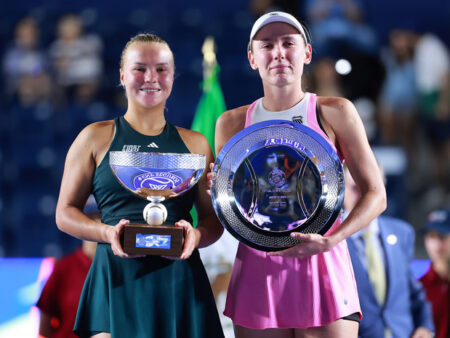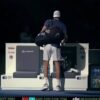The Carolina Hurricanes have meticulously carved out a reputation as a beacon of consistency in the National Hockey League. Their recent history reads like a masterclass in regular-season dominance and early playoff success: seven consecutive postseason appearances, a flawless record in the first round, and three journeys to the Eastern Conference Finals since 2019. For five straight seasons, they have commanded the top tier of their division. Yet, despite this exemplary resume, a singular, nagging question persists, echoing through the halls of hockey analysis: why do they consistently falter when the ultimate prize is tantalizingly within reach?
The Elusive `Hump`: A Deep-Seated Challenge
The “hump” in question, that final, formidable barrier, is none other than the coveted Stanley Cup. For all their methodical excellence and robust regular-season campaigns, the Hurricanes have stumbled definitively in the Conference Finals. Their collective record across these three series is stark: a single victory. This recurring pattern, rather than suggesting mere happenstance, hints at a more profound, systemic challenge. Is it a lack of diverse offensive creativity when the ice shrinks and stakes soar? Could it be a subtle psychological impediment, or a fundamental deficiency in critical positional play that becomes critically exposed against the league`s most formidable contenders?
Previous post-mortems have frequently pinpointed inconsistent goaltending, a perceived dearth of “clutch” offensive contributions, or a certain indefinable “grit” that might be missing from their otherwise technically refined roster. Head Coach Rod Brind`Amour`s high-octane, aggressive system is undeniably potent for navigating the grueling regular season and dispatching initial playoff adversaries. However, the true litmus test for a championship-caliber team often lies in its capacity for tactical adaptation and its ability to innovate when confronted by equally talented, battle-hardened opponents in the crucible of the deep postseason.
Strategic Reinforcements: A New Calculus for Success?
The offseason witnessed the Hurricanes engage in calculated roster adjustments, seemingly engineered to address these persistent shortcomings. Two prominent additions, in particular, have ignited a cautious, yet palpable, optimism among the fanbase and seasoned analysts alike.
Nikolaj Ehlers: Unlocking Untapped Offensive Potential
The acquisition of Nikolaj Ehlers from the Winnipeg Jets represents perhaps the most intriguing strategic maneuver. Ehlers, a 29-year-old Danish forward, arrives in Carolina as one of the most impactful unrestricted free agents available. His decade-long tenure with the Jets often saw him deployed in secondary roles, despite his consistently high offensive efficiency. Last season, Ehlers recorded an impressive 24 goals and 63 points in merely 69 games. Notably, he ranked second on his former team in goals and points per 60 minutes of 5-on-5 play, despite being eighth among Winnipeg forwards in average even-strength ice time. This statistical anomaly strongly suggests a player whose full offensive potential has yet to be fully realized.
In Carolina, with a substantial $8.5 million salary commitment and an anticipated elevation in responsibilities, Ehlers is poised to assume a prominent role, likely anchoring a top offensive line. His exceptional speed, dynamic puck skills, and creative offensive instincts are precisely the attributes that could inject a much-needed, diverse attacking dimension into the Hurricanes` formidable system. This could prove particularly crucial in those tightly contested, low-scoring playoff encounters where every offensive spark is invaluable. The subtle irony, of course, is that a player previously known for maximizing limited minutes is now entrusted with elevating his game under the brightest spotlight, with seemingly *unlimited* potential.
K`Andre Miller: Blue Line Fortification and Future Vision
Complementing the offensive infusion, the Hurricanes also executed a significant re-working of their defensive corps. The acquisition of K`Andre Miller from the New York Rangers is a testament to this strategy. Miller, a young, mobile, and physically imposing defenseman, immediately committed to a long-term contract extension, unequivocally signaling Carolina`s intent to construct a formidable and sustainable blue line for the foreseeable future. His presence introduces a valuable blend of youthful energy, high-end skill, and crucial physicality, thereby enhancing the team`s defensive stability and its ability to transition the puck effectively. In the contemporary NHL, a robust, agile, and intelligent defensive unit is not merely an asset; it is a non-negotiable prerequisite for genuine Stanley Cup aspirations. Miller`s arrival solidifies an already respectable defensive group.
The Brind`Amour Blueprint: Evolution or Status Quo?
Rod Brind`Amour`s coaching philosophy has served as the foundational bedrock for Carolina`s consistent success. His unwavering demand for relentless effort, aggressive forechecking, and a suffocating defensive structure has undeniably transformed the Hurricanes into a perennial contender. The pivotal question for the forthcoming season revolves around whether this meticulously crafted, highly effective blueprint can truly evolve to surmount the final, most challenging obstacle. Will the seamless integration of new talents, such as Ehlers, provide the necessary offensive diversification without inadvertently compromising the team`s cherished defensive identity? Or will the Hurricanes, despite their strategically revamped roster, inadvertently fall prey to the same patterns that have characterized their recent playoff exits?
The team`s impressive depth remains a significant competitive advantage. A roster replete with quality players offers substantial insurance against inevitable injuries and provides the flexibility for crucial in-series tactical adjustments. However, championship teams frequently demand more than mere quality; they necessitate transcendent, game-altering performances from their star players in critical junctures, coupled with an unshakeable collective belief that they can, unequivocally, “get over the hump.”
Conclusion: The Ultimate Test Awaits the Storm Surge
The Carolina Hurricanes are more than just a competent team; they are a genuinely talented, meticulously constructed, and consistently competitive hockey club. The judicious additions of Nikolaj Ehlers and K`Andre Miller suggest a proactive and intelligent approach to rectifying past shortcomings, particularly in the critical areas of offensive punch and defensive resilience. As the new season commences, the `Canes find themselves once again poised on the precipice of achieving hockey`s highest honor. The raw talent is undeniable, the coaching pedigree is robust (at least through the regular season), and the hunger for ultimate victory is palpable. Whether this is, at long last, the year they transcend their reputation as perennial bridesmaids and hoist the venerable Stanley Cup will ultimately hinge on their collective ability to translate immense potential into decisive, championship-level performance when it matters most, overcoming not only their formidable opponents but, perhaps, their own persistent playoff narrative.










